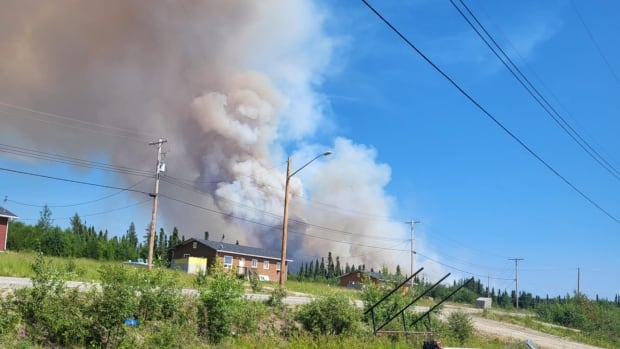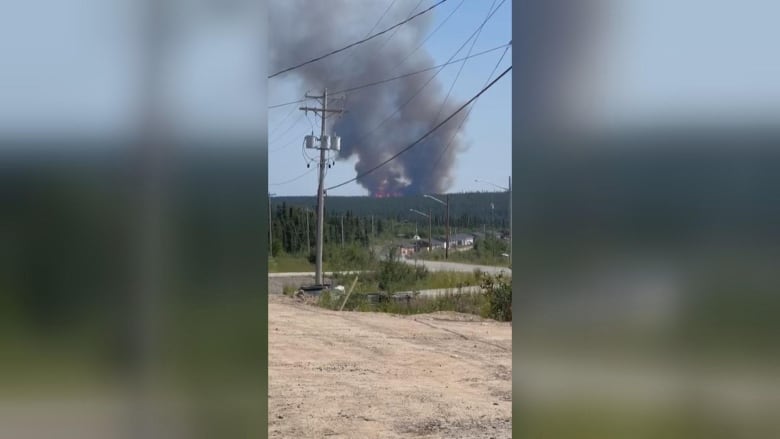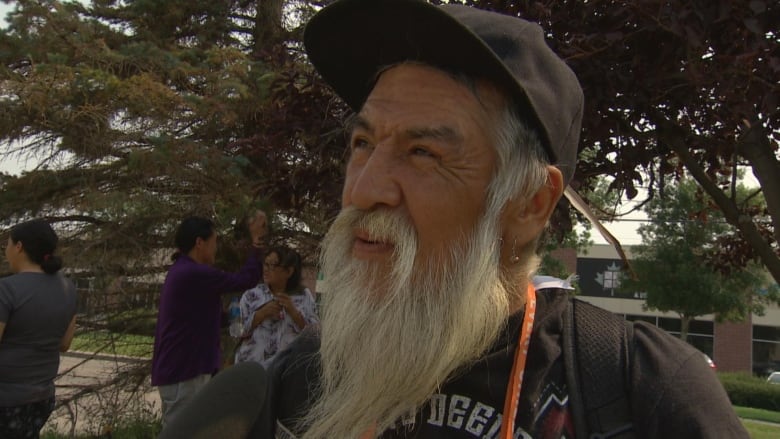
The smoke billowing from a rapidly growing wildfire in northeastern Manitoba has forced the evacuation of more than 1,000 vulnerable residents from Wasagamack First Nation, Red Sucker Anisininew Nation and God’s Lake First Nation.
At least 100 vulnerable residents, including those with health conditions, respiratory issues, elderly and young children, were evacuated from God’s Lake Narrows to Winnipeg last week.
The Canadian Red Cross said they were assisting in the evacuation of 216 community members from God’s Lake Narrows by Monday.
“Over the past two days, communities of Wasagamack [First Nation] and Red Sucker Lake [Anisininew Nation] have also decided to move out their high-priority people,” provincial wildfire service director Earl Simmons said.
With air quality worsening, health concerns of vulnerable residents have led to the evacuation of approximately 200 people from Red Sucker Anisininew Nation, while at least 800 people have evacuated out of Wasagamack First Nation, Simmons said.
The majority of the evacuees have been relocated to Winnipeg. However, with hotel vacancy reaching its limit in the city, the province said authorities have started to look for accommodations in Brandon as well.
“The fire isn’t threatening the communities. It’s a smoke issue,” he said, adding three First Nations are at least 25 kilometres away from the wildfire. They’re located in northeastern Manitoba, near the Ontario border, and about 500 km north of Winnipeg.
The province said the wildfire is out of control, stretching “substantially” over the past days from 3,000 hectares on Friday to close to 10,000 hectares by Monday. Simmons said drought conditions, winds and the kind of trees in the canopy have allowed the fire to “really grow in size.”
The thick smoke emanating from the wildfire is also interfering with crews trying to put out the blaze from the air.
“We saw extreme fire behaviour over the weekend,” he said. “Our water bombers and helicopters are challenged to get into that area because of all the smoke.”
The province is battling around 50 wildfires that are burning out of control, the majority of them in northern Manitoba, picking up the province’s fire activity from low to moderate.
“We’re seeing some extreme fire behaviour and we have to be really careful where we put our crews,” Simmons said, adding the priority is to steer wildfires away and prevent them from going toward communities.
‘I miss being home’: Marcel Colomb resident
Days after being evacuated over the threat of wildfire, members of the Marcel Colomb First Nation in northwestern Manitoba are holding onto hope they can soon return to their community.
A full-scale evacuation order was issued for the community last Wednesday after a shift in the winds blew the growing wildfire directly at the site.
“I miss home. I miss being home,” Gary Eli Caribou, a resident from Marcel Colomb First Nation, said.

Caribou said the wildfire spread swiftly, blanketing the community with smoke, and making it harder for the elderly or the young to breathe. Power lines were also toppled, leaving the community without electricity.
Busloads evacuated hundreds that day to Thompson, Lynn Lake and The Pas. Caribou was among the evacuees who boarded the bus to Thompson overnight on Thursday. The next day, he boarded a plane and landed in Winnipeg.
“It was a tiring journey,” said Alan Isaac Linklater, another evacuee who made the roughly 800-kilometre journey from Marcel Colomb First Nation south to Winnipeg.

Caribou and Linklater are staying with other evacuees at a hotel near the Winnipeg airport.
“This is practically Marcel Colomb First Nation building right here, because we all live here now,” Jonas Linklater, another evacuee, said.
Amanda Castel, a Marcel Colomb First Nation councillor, said at least 200 evacuees are in Winnipeg, while 50 others stayed back in Lynn Lake and 50 more in Thompson.
The Canadian Red Cross said it’s currently supporting 194 community members from Marcel Colomb First Nation.
Almost a week after being detected, the fire near Marcel Colomb First Nation is still out of control, stretching just shy of 1,000 hectares and sitting four kilometres away from the community.
The province says the fire has been burning down into the ground, forcing crews to not only extinguish the flames on the surface but also dig up the soil to put the blaze out.
“It’s a difficult, very hilly country to work in,” Simmons said. “It’s requiring a fair amount of work for the fire crews that are working on that.”
Wildfire firefighters are working around the perimeter of the fire to contain it, using heavy equipment to distribute water and extinguish the edges of the blaze to protect the nearby communities and a provincial highway.
The wildfire, however, is only 20 to 25 percent under control, Simmons said.
“At this time, the Marcel Colomb First Nation, our recommendation would not be for anybody to return, we’re not in a position to have them back,” he said. “It’s not safe for people.”

